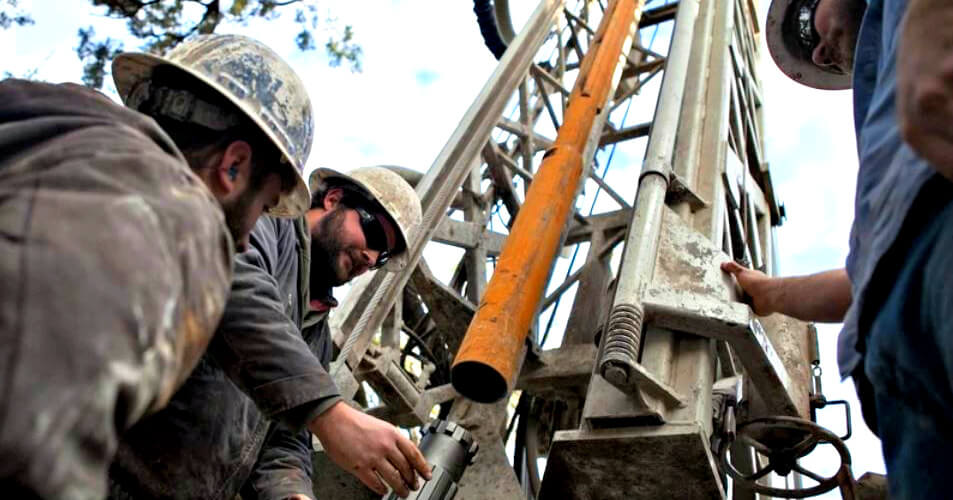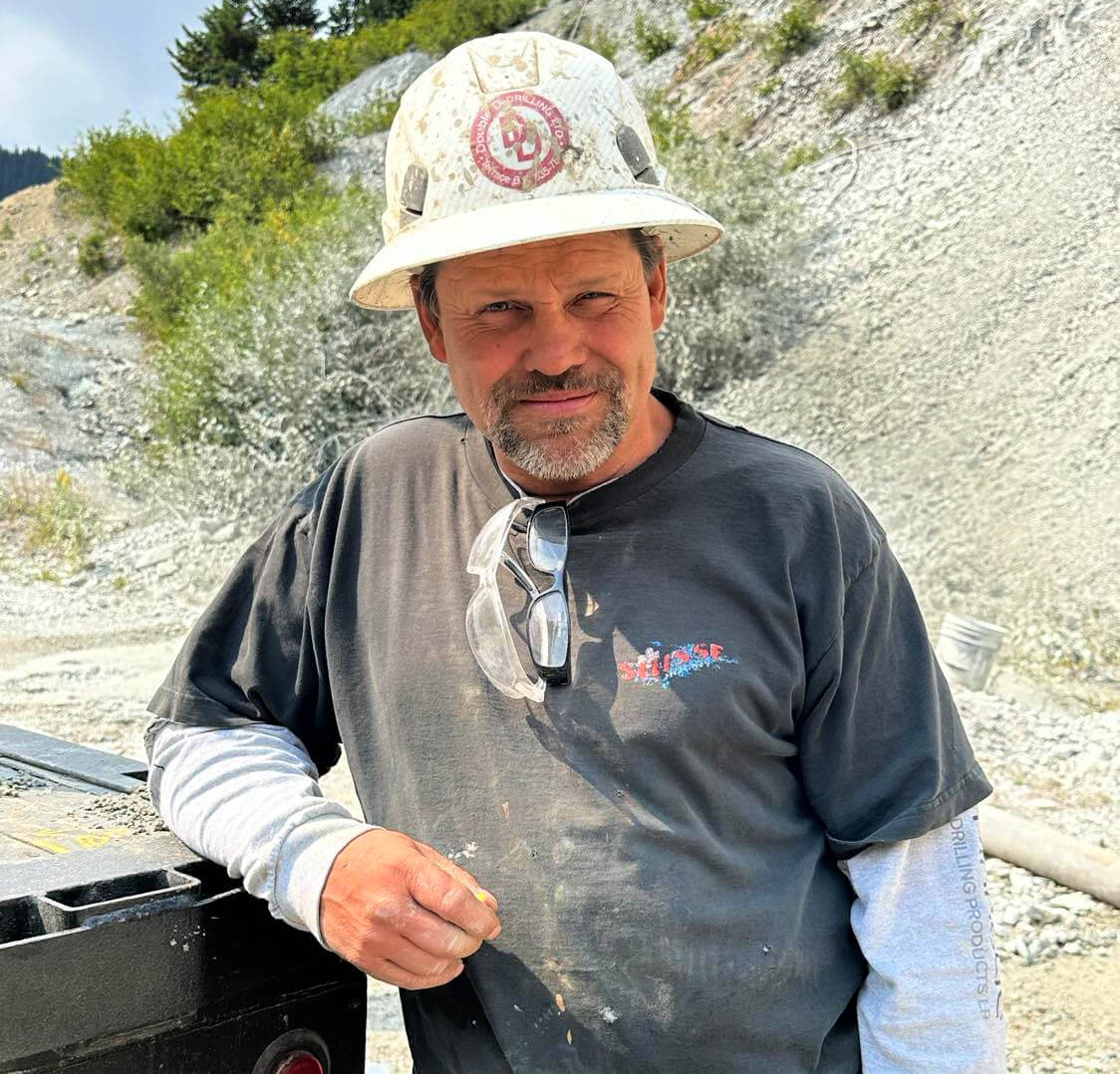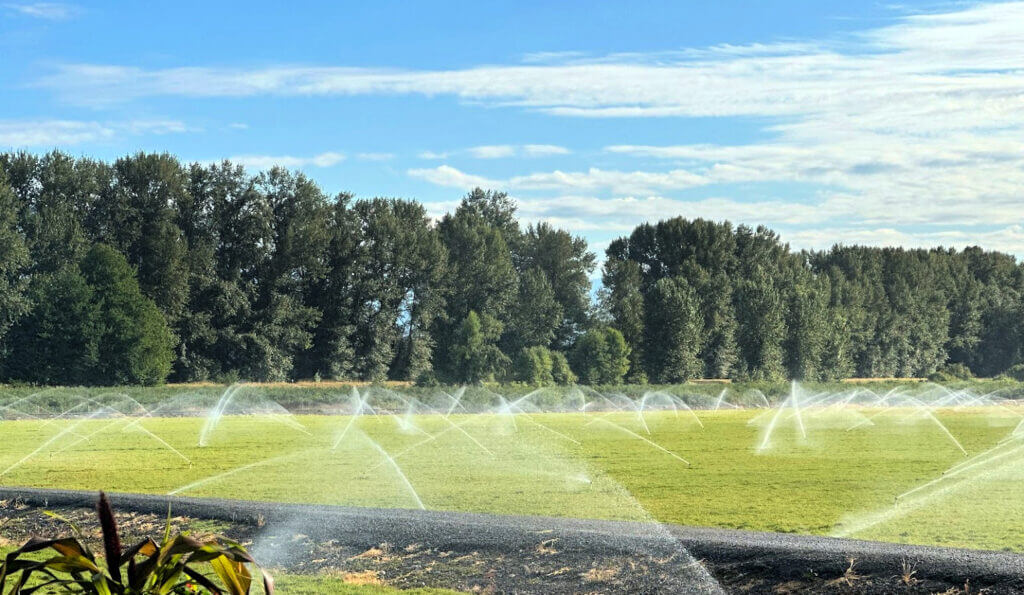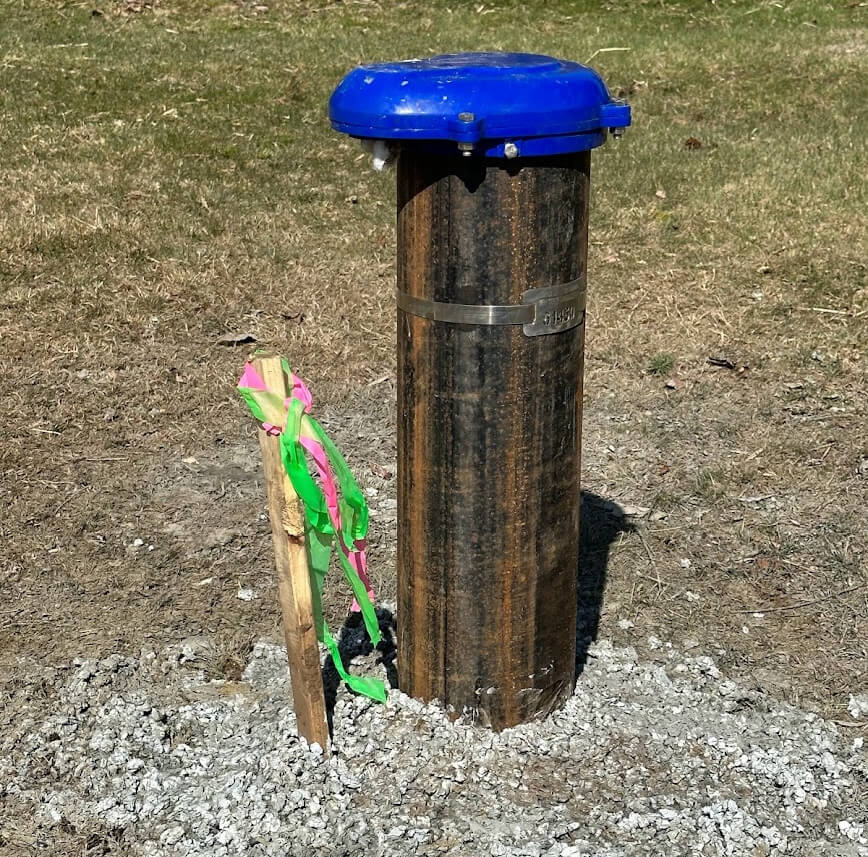Abbotsford | Clearbrook | Chilliwack | Yarrow | Sardis | Ryder Lake | Harrison Lake | Hope | Ladner | Langley | Fort Langley | Aldergrove | Cloverdale | Maple Ridge | Albion | Whonnock | Ruskin | Pitt Meadows | Mission | Deroche | Dewdney | Surrey | Squamish | Whistler | Pemberton
Thank you for visiting our online well drilling cost estimate system specifically designed for the Fraser Valley. Our water drilling estimator knows the Fraser Valley and is very experienced, but we do need some information first. There is much more to the cost of drilling a well than the price per foot and we will include as much detail as possible.
Our Fraser Valley Well Drilling cost estimate system saves us all a lot of time. Let us do the research for the cost to drill a well on your Fraser Valley property; we will email a detailed estimate to you shortly.
If there are images or anything that may be helpful, please upload them, and we will take a look. Please provide the following information for a well drilling cost estimate.

Abbotsford, Clearbrook, Chilliwack, Yarrow, Sardis, Ryder Lake, Harrison Lake, Hope, Ladner, Langley, Fort Langley, Aldergrove, Cloverdale, Maple Ridge, Albion, Whonnock, Ruskin, Pitt Meadows, Mission, Deroche, Dewdney, Surrey, Squamish Whistler, and Pemberton region.
Request an online well drilling cost estimate for Domestic Water Well Drilling, Commercial Well Drilling, Agricultural Well Drilling, Municipal Well Drilling, Drilling Site Selection, Water Well Repair Services, Subdivision Consulting, Water Supply Services, Hydrogeological Investigation, Well Decommissioning, Drilling Site Excavation and Site Prep, and Water Well Inspections. Water Well Rehabilitation.
Call Us: 604-409-4931

Investing in a water well in British Columbia’s Fraser Valley provides rural property owners and businesses with a sustainable and independent water supply.
Well drilling cost estimates in the Fraser Valley will always vary depending on various factors, including geographical location, the depth required to reach the aquifer, and drilling conditions. For property owners in British Columbia, understanding the cost of drilling a well is critical to planning for an affordable and reliable water source.
Locating the drilling site, preparing the location for drilling equipment access, actual drilling, casing, screening, well development, and often installing a PVC liner.
As you can see, drilling a well involves various steps, each adding to the overall cost of drilling a well. The actual drilling process often incurs the highest expenses, primarily due to the need for specialized drilling equipment and skilled labour. This resource-intensive phase requires precision, contributing significantly to the total cost.
The requirements for constructing a water well may vary depending on each property’s situation. The site’s accessibility may need to be modified, and the need for approvals and setbacks may have to be adjusted. The local, regional, or municipal bylaws and provincial regulations governing water-well construction may also impact the overall cost.

Our team is often involved in water well drilling requirements for land development and new home construction in the Fraser Valley. Most of the time, a pumping test is required, and a local engineering firm is needed.
Fraser Valley Well Drilling is proficient enough to handle each aspect of the water well drilling process efficiently while ensuring the final costs remain an ongoing consideration. Our team is adept at preplanning land development initiatives, irrespective of their scale.
In the Fraser Valley, the cost of drilling a well also reflects the unique geological characteristics of the area, which can impact drilling methods and the materials used.
As a local well drilling contractor servicing the B.C. lower Mainland, we are adept at providing detailed water well drilling cost estimates based on the parameters for water well installation on any specific property.
We strive to give Fraser Valley property owners a clear understanding of their financial commitment before drilling for water on their rural property.
Hiring licensed and experienced drillers for well-drilling projects in British Columbia is important.
Water well drilling in the Fraser Valley of British Columbia shares many similarities with the province’s general overview of drilling for water.
Did you know the Fraser Valley has unique geological and environmental characteristics that make it stand out? These characteristics require us to consider some specific considerations when drilling for water in the Fraser Valley.

Sedimentary and Alluvial Deposits: There are extensive sedimentary and alluvial deposits in the Fraser Valley, which the Fraser River deposited during its historical flow. These deposits can be excellent sources of groundwater.
Post-Pleistocene Geological Impact: The Drainage of a Glacial Lake and Its Effects on the Fraser River Valley in British Columbia
Glacial activity, particularly during the Pleistocene Termination, significantly impacted the Fraser Valley’s rich geological history in British Columbia. Key findings from research on this region include:
There are streamlined boulder-strewn bars, gravel dune fields, and terraces in the Fraser Valley. These are all signs that floodwaters changed the landscape of a glacial lake, aligning with the geological features that can form after such events. Here’s a breakdown for accuracy and context:
The Fraser Valley has a rich geological history, with significant glacial activity occurring during the end of the Pleistocene era. It is closely associated with the Fraser River and it’s historical geological events.
This area was likely involved in sediment transport processes, especially regarding the proto-Salish Sea. Glacial and post-glacial activities impacted this region’s significant geological changes, including floods and sediment transport.
The influence of these activities on groundwater availability and movement is still present today. The legacy of past glacial events can be seen throughout the region when drilling water wells in the Fraser Valley.

The importance of understanding local hydrogeology is highly relevant when drilling a well in the Fraser Valley for several reasons:
A comprehensive understanding of the Fraser Valley’s hydrogeology is crucial for successful and sustainable water well drilling. It aids in locating productive aquifers, optimizing well placement, ensuring sustainable water use, navigating geological challenges, complying with regulations, and addressing water quality issues.
Request a Well Drilling Cost Estimate Online
British Columbia (B.C.), Canada, has specific regulations and guidelines governing the use and management of groundwater, particularly about well drilling and water rights. These regulations are part of the province’s efforts to manage water resources and protect the environment sustainably. Key aspects of these regulations include:
It’s important to note that these regulations can be subject to updates and changes. For the most current and detailed information, it’s advisable to consult the latest resources provided by the Government of British Columbia or legal experts in B.C. water law.
As of February 29, 2016, in British Columbia, non-domestic groundwater use requires a water license. The authorities implemented this change to regulate non-domestic groundwater use in the province. Non-domestic usage refers to using groundwater for purposes other than domestic, such as agriculture, industry, or commercial activities.
Owners of non-domestic wells must obtain a water license to use groundwater. This licensing process is part of the provincial government’s efforts to ensure sustainable and equitable use of water resources. The process involves registering the well and obtaining a license that outlines the terms and conditions of groundwater use.
This requirement is part of the Water Sustainability Act, enacted in British Columbia, to modernize the management of surface water and groundwater resources. The act aims to ensure a sustainable supply of fresh, clean water that meets the needs of B.C. residents today and in the future.
You can visit the B.C. Government website on water licensing and rights for more information on applying for a water license for non-domestic groundwater use.
Water wells located in British Columbia are required to be registered with the provincial government. The Ministry of Environment is responsible for overseeing the registration process. To register an existing unregistered water well, the owner must complete a well registration form and submit it to the Ministry. This can be done either by sending an email to [email protected] or mailing it to the address provided on the form.
The registration creates a record of the well and the water use, which is important for ensuring that the well owner’s water use is considered in decisions regarding new water rights authorizations and during water scarcity.
For more information or assistance with the registration process, owners can contact FrontCounter BC. This service helps with natural resource inquiries and applications, including water well registration.
For information on registering your water well or accessing the registration form, please visit the B.C. Government website on water well management.
Non-compliance with the Water Sustainability Act (WSA) and associated regulations can lead to legal consequences.
The Water Sustainability Act (WSA) manages and safeguards British Columbia’s groundwater resources. It is important to follow specific guidelines to comply with the regulations set forth by the Water Sustainability Act (WSA). These regulations include obtaining licenses for non-domestic groundwater use, adhering to well construction standards, and complying with the water usage limits and conditions specified in the license.
Failure to comply with these regulations can result in various penalties, including fines, enforcement actions, and potentially even criminal charges in severe cases of non-compliance. The government of British Columbia has the authority to enforce regulations that ensure sustainable and responsible use of groundwater resources, protecting them for future generations and the environment.
Therefore, it’s crucial for individuals and entities using groundwater in British Columbia to understand and adhere to these regulations to avoid legal repercussions.
Water Well Development: is a critical step in the construction of a drilled water well, and it serves several important purposes:

To estimate water well drilling costs for the Lower Mainland, rural property owners should begin by requesting a detailed estimate. This estimate commonly includes:
Fraser Valley Well Drilling will provide a baseline well drilling cost estimate, but it’s vital to account for potential unforeseen expenses. Each well drilling site is different, and the cost to drill a well in the Fraser Valley also varies from one property to another.
In British Columbia, individuals looking to drill a well may have access to various government grants and financial support options to offset costs. These incentives can significantly reduce the financial burden of water well drilling.
For financial support for water well drilling in British Columbia, it’s important to note that specific programs, eligibility criteria, and the availability of funds can vary and are subject to change. Here’s a brief overview of the key points you mentioned:
Remember, while this information provides a general guideline, consulting directly with the relevant authorities or a professional advisor for specific advice and the latest information on grants and financial support for well drilling is always best.
Drilling depth and the type of well are pivotal factors influencing the cost of water well drilling in British Columbia. These elements determine the complexity, time, and machinery required for the job.
Shallow wells may reach up to 30 meters deep or less and are suitable for aquifers near the surface. The cost of drilling shallow wells tends to be lower due to the reduced depth and lesser requirement for materials and time.
Deep wells, in contrast, often exceed 30 meters, reaching depths that can tap into deeper underground aquifers. Drilling deep wells is usually more involved, requiring more sophisticated equipment and longer drilling times, thus increasing the overall cost.
Determining whether the local aquifer depths necessitate a shallow or deep well is essential to preparing a detailed well drilling cost estimate in the Fraser Valley.
The necessary depth of a well is calculated based on several factors:
To accurately determine the depth needed for a well, Fraser Valley Well Drilling will conduct a thorough site assessment and consider the following steps:
This water well depth calculation is crucial in determining each water well project’s well drilling cost estimate.
Maintaining a water well in British Columbia involves regular costs to ensure proper functioning and longevity. Efficient management can reduce long-term expenditures.
To effectively estimate maintenance costs for a water well, one must consider annual inspections to identify any immediate repair needs.
The well pump and related equipment, including the water treatment system, are checked during a water well inspection. A water system inspection with a report will usually cost between $300 and $600, depending on the complexity of the system and the fees charged by local service providers. We recommend performing a pump test periodically to assess the system’s performance.
Additionally, factor in the cleaning or disinfection of private water wells, which helps prevent sediment and bacterial contamination. Water well disinfection can add an extra $250–$500 to annual costs, depending on the scope of the water well system.
A water well’s lifespan ranges from 30 to 50 years or longer. One of the major expenses associated with well maintenance is the replacement of the well pump, which typically needs to be done every 10 to 15 years.
Replacing a submersible well pump in the Fraser Valley can range in cost from $800 to $2,500 or more, with submersible pumps being more costly due to their complexity. Regularly scheduled pump tests or well pump inspections can help owners identify declining efficiency, potentially preventing emergencies.
Replacement of other components, such as the pressure tank, pressure switch adjustment, U.V. sterilizer bulb replacement, etc., may also be necessary, leading to additional expenses. The replacement intervals for these components largely depend on the quality of the installation and local groundwater conditions.
Property owners in British Columbia who are considering drilling a water well can explore various financing options to manage the costs associated with this investment.
The cost of drilling a water well in the Fraser Valley can range from a few thousand to tens of thousands of dollars. Therefore, examining all available financial avenues is essential.
Personal Savings: Utilizing personal savings is a straightforward method to finance a water well. This option helps avoid interest fees and simplifies the process.
Bank Loans: Local banks provide personal loans that individuals can use to improve their property, such as water well drilling. Borrowers should carefully compare interest rates and terms to find the most favourable loan.
Credit Lines: Home equity line-of-credit (HELOC) leverages the equity in a property. Owners may draw funds as needed and pay interest only on the amount used, which can be beneficial for covering unexpected costs during well construction.
Government Programs: Some government initiatives provide grants or subsidized loans for water infrastructure. It’s advisable to call local government agencies or visit their websites to check for eligibility.
It’s important to understand the terms and any potential interest charges.
When considering financing options, proper research and a clear understanding of the terms help rural property owners select the most cost-effective method for their financial situation. Consulting with a financial advisor is recommended for personalized advice.
The costs will vary, depending on your property and requirements. Begin to gather information by requesting a well drilling cost estimate online.
Ensuring the cost-effectiveness of a water source in the Fraser Valley often involves considering alternatives to traditional well drilling methods.
Property owners and businesses may seek more affordable options, especially in areas facing water accessibility challenges, such as drought conditions.
These alternatives should be evaluated on a case-by-case basis, considering the specific conditions and requirements of the property, the long-term cost implications, and environmental factors. For more information, request an online well drilling cost estimate.
Abbotsford | Clearbrook | Chilliwack | Yarrow | Sardis | Ryder Lake | Harrison Lake | Hope | Ladner | Langley | Fort Langley | Aldergrove | Cloverdale | Maple Ridge | Albion | Whonnock | Ruskin | Pitt Meadows | Mission | Deroche | Dewdney | Surrey | Squamish | Whistler | Pemberton
Abbotsford | Clearbrook | Chilliwack | Yarrow | Sardis | Ryder Lake | Harrison Lake | Hope | Ladner | Langley | Fort Langley | Aldergrove | Cloverdale | Maple Ridge | Albion | Whonnock | Ruskin | Pitt Meadows | Mission | Deroche | Dewdney | Surrey | Squamish | Whistler | Pemberton